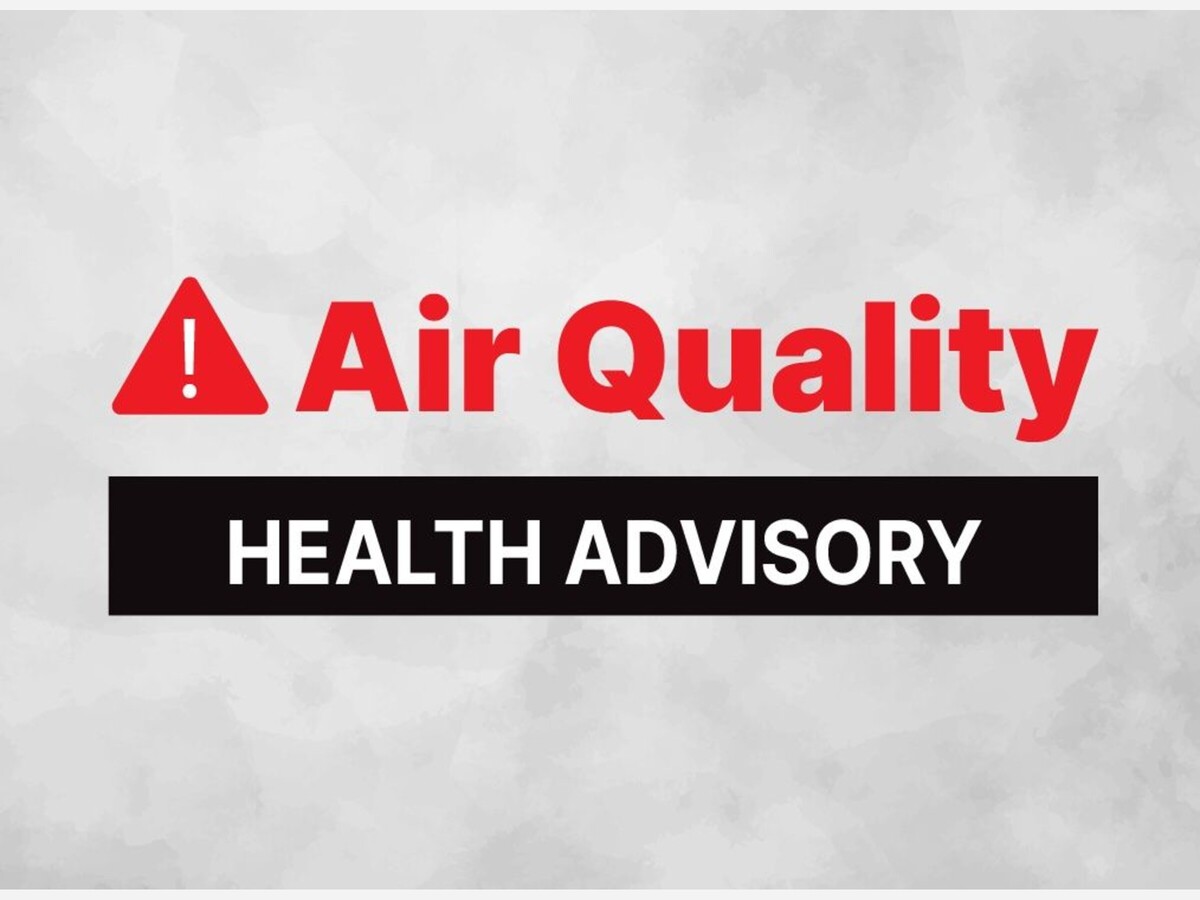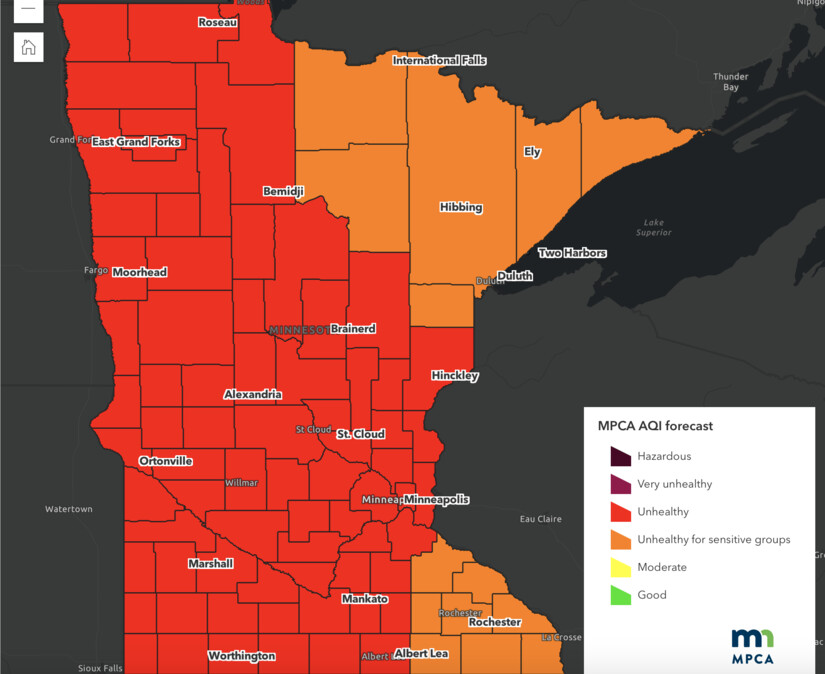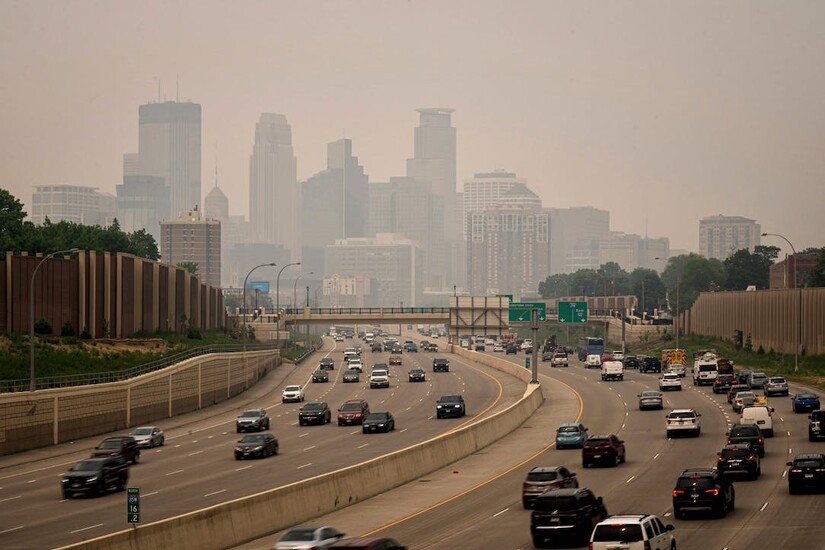Image

The Minnesota Pollution Control Agency (MPCA) has expanded the air quality alert for northern Minnesota to include central Minnesota due to Canadian wildfire smoke. The alert is effective until 6 a.m. on Friday, June 16. The affected area includes Roseau, International Falls, Ely, Hibbing, Duluth, Two Harbors, Brainerd, Alexandria, Moorhead, Ortonville, St Cloud, the Twin Cities, and the tribal nations of Prairie Island, Mille Lacs, Fond du Lac, and Grand Portage. An alert also remains in effect due to ozone for southeast Minnesota, effective Wednesday, June 14, from noon to 8 p.m. The affected area includes the Twin Cities, Rochester, and the tribal nation of Prairie Island.
Smoke will continue slowly moving south during the day Wednesday and may approach the Minnesota River Valley and southeast Minnesota in the evening. Winds will shift and push this smoke towards the south and west. Air quality will improve for northern Minn. on Thursday, but smoke will linger across much of southern Minn. throughout the day on Thursday, and the alert will continue there until Friday morning. Smoke will begin to dissipate below the Orange category across southern Minn. Friday morning. In addition, sunny skies, warm temperatures, low humidity, and light winds will produce an environment for Volatile Organic Compounds (VOC) and Oxides of Nitrogen (NOx) to react in the air to produce elevated levels of ozone Wednesday afternoon. Ozone will be elevated across the Twin Cities and Rochester during the afternoon hours, but will decrease in the evening, according to the Minnesota PCA.
Fine particle levels are expected to reach the red air quality index (AQI) category throughout Wednesday, a level considered unhealthy for everyone, across north central Minn. This area includes the Twin Cities, St Cloud, Alexandria, Hinckley, Brainerd, Duluth, Hibbing, Bemidji, Moorhead, East Grand Forks, and the tribal nations of Mille Lacs, Fond du Lac, Leech Lake, Red Lake, and Prairie Island. In the red area, everyone should avoid prolonged time outdoors. Air quality levels are expected to be in the orange air quality index (AQI) category, a level that is considered unhealthy for sensitive groups, for far northern, south central, and southeast Minn. In the orange area, sensitive groups should avoid prolonged time outdoors.

What this alert means
During air quality alerts due to wildfires, the air is mixed with harmful smoke.
The air quality index (AQI) is color-coded. Air quality alerts are issued when the AQI is forecast to reach an unhealthy level, which includes forecasts in the orange, red, purple, and maroon categories. For a full description of each air quality category, visit airnow.gov.
Red air quality: Unhealthy
Sights and smells: In areas where air quality is in the red AQI category due to wildfires, the sky may look smoky. The air will look hazy, and you won’t be able to see long distances. You may smell smoke.
Health effects: This air is unhealthy for everyone. Anyone may begin to experience symptoms such as irritated eyes, nose, and throat, coughing, chest tightness, or shortness of breath. Sensitive or more exposed individuals may experience more serious health effects, including worsening of existing heart or lung disease and respiratory and cardiovascular conditions, possibly leading to an asthma attack, heart attack, or stroke.
What to do: Reduce outdoor physical activities, take more breaks, and avoid intense activities to reduce exposure. Sensitive and more exposed individuals should avoid prolonged or vigorous activities and consider shortening, rescheduling, or moving outdoor events inside.
Orange air quality: Unhealthy for sensitive groups
Sights and smells: In areas where air quality is in the orange AQI category due to wildfires, the sky may look hazy and residents may smell smoke even when wildfires are far away.
Health effects: This air is unhealthy for sensitive groups and pollution may aggravate heart and lung disease as well as cardiovascular and respiratory conditions. Symptoms may include chest pain, shortness of breath, wheezing, coughing, and fatigue.
What to do: People in sensitive groups are encouraged to reduce outdoor physical activities, take more breaks, or do less intense activities to reduce their exposure. People with asthma should follow their asthma action plan and keep their rescue inhaler nearby.

Who’s most at risk
Fine particle pollution from wildfire smoke can irritate eyes, nose, and throat, and cause coughing, chest tightness, shortness of breath, dizziness, or fatigue. Smoke particles are small enough that they can be breathed deeply into lungs and enter the bloodstream. This can lead to illnesses such as bronchitis or aggravate existing chronic heart and lung diseases, triggering heart palpitations, asthma attacks, heart attacks, and strokes.
Certain groups experience health effects from unhealthy air quality sooner than others, either because they are more sensitive to fine particle pollution or because they are exposed to larger amounts of it.
Sensitive groups include:
People who have asthma or other breathing conditions like chronic obstructive pulmonary disease (COPD)
People who have heart disease, high blood pressure, or diabetes
Pregnant people
Children and older adults
People with increased exposure include:
People of all ages who do longer or more vigorous physical activity outdoors
People who work outdoors, especially workers who do heavy manual labor
People who exercise or play sports outdoors, including children
People who don’t have air conditioning and need to keep windows open to stay cool
People in housing not tight enough to keep unhealthy air out, or who do not have permanent shelter.

Anyone experiencing health effects related to poor air quality should contact their health care provider. Those with severe symptoms, chest pain, trouble breathing, or who fear they may be experiencing a heart attack or stroke should call 911 immediately.
Stay informed
Visit MPCA’s Air Quality Index webpage for information on current air quality conditions in your area.
SOURCE: Hometown Source